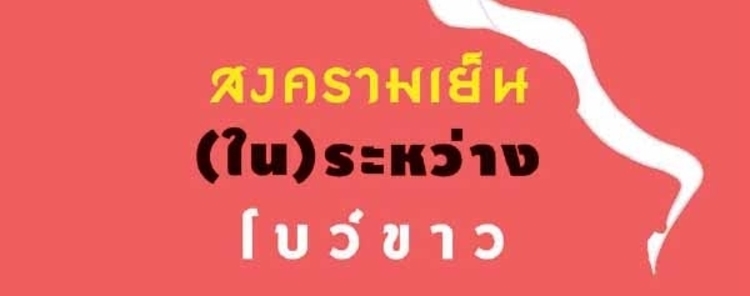
Kanokrat Lertchoosakul’s book สงครามเย็น (ใน)ระหว่าง โบว์ขาว (‘the Cold War (in)between the white bow’), published last year, examines the roles of successive generations in the current Thai political protest movement. Kanokrat argues that the present government, which came to power in a military coup, is a remnant of the Cold War era, when authoritarianism was accepted by society at large. (Director Apichatpong Weerasethakul discusses this older generation’s submissive attitude in Thai Cinema Uncensored: “disruption of the flow and unity is a really big deal. Like my Mum... she is in the generation of Sarit [Thanarat], all these people who were very powerful.”) On the other hand, today’s students are much less tolerant of Thailand’s top-down culture, and in 2020 the Free Youth anti-government group encouraged high school students to wear white ribbons as a symbol of resistance.
What’s most remarkable about the book is its inclusion (on p. 57) of the Dao Siam (ดาวสยาม) front page that sparked the 6th October 1976 massacre. (The newspaper falsely accused Thammasat University students of lèse-majesté, and vigilantes stormed the campus.) For more than thirty years, there was an unspoken prohibition against reproducing Dao Siam’s incendiary headline and photo. Sarakadee (สำรคดี) magazine broke the taboo in its June 2012 issue, though other publications have only recently followed suit. The front page has appeared in only three other books, all published within the last three years: 45 ปี 6 (‘45 years of 6th Oct.’), Prism of Photography (ปริซึมของภาพถ่าย), and Moments of Silence. Heavily obscured by overpainting, it’s also part of Thasnai Sethaseree’s new Cold War exhibition at MAIIAM in Chiang Mai.
What’s most remarkable about the book is its inclusion (on p. 57) of the Dao Siam (ดาวสยาม) front page that sparked the 6th October 1976 massacre. (The newspaper falsely accused Thammasat University students of lèse-majesté, and vigilantes stormed the campus.) For more than thirty years, there was an unspoken prohibition against reproducing Dao Siam’s incendiary headline and photo. Sarakadee (สำรคดี) magazine broke the taboo in its June 2012 issue, though other publications have only recently followed suit. The front page has appeared in only three other books, all published within the last three years: 45 ปี 6 (‘45 years of 6th Oct.’), Prism of Photography (ปริซึมของภาพถ่าย), and Moments of Silence. Heavily obscured by overpainting, it’s also part of Thasnai Sethaseree’s new Cold War exhibition at MAIIAM in Chiang Mai.
